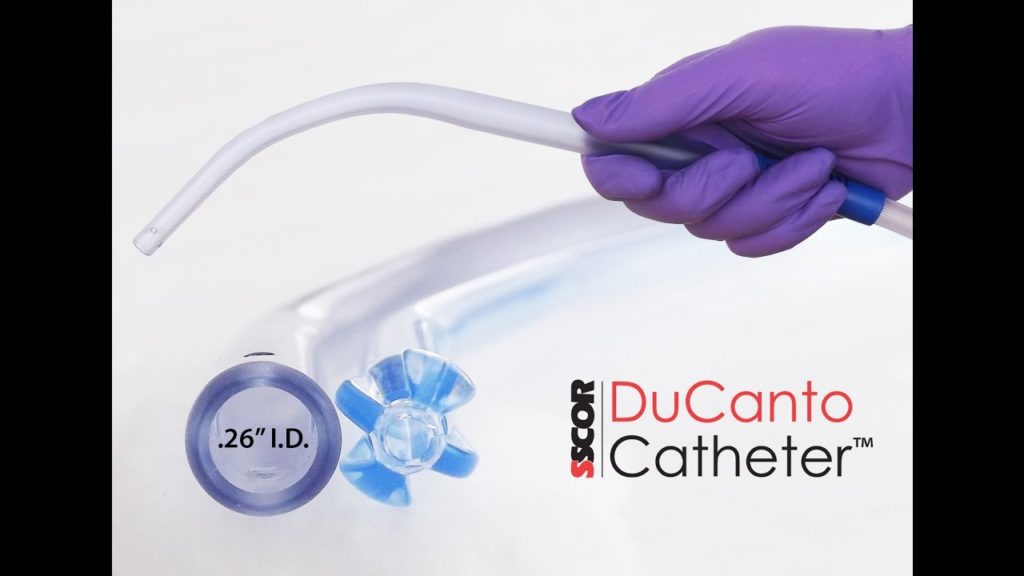Airway Decontamination
Airway-related complications significantly increase as the number of laryngoscopic attempts increase1.
Airway contamination is one of the major causes of failure in first pass tracheal intubation attempts2. Blood and vomitus in the airway have been identified as a predictor of difficult intubation 3,4,5,6,7. Yet, decontamination of the airway is a poorly defined step in airway management8.
The Yankauer suction tip, developed in 1907 by an American ENT surgeon (Sidney Yankauer) was originally designed to help clear the surgical field during a tonsillectomy and has become the most commonly used medical instrument in the world with its use expanding to include many surgical procedures, as well as in-hospital and prehospital oropharyngeal suctioning. New generation suction catheters provide greater efficiency in clearing the airway.
Dr James DuCanto, MD, is a well-known anaesthetist with a special interest of innovating and improving airway management. He is the inventor of the SALAD (Suction Assisted Laryngoscopy & Airway Decontamination) simulator and the SSCOR DuCanto Catheter.
During simulation Jim noticed that the HI – D catheter was awkward to work with when using hyper curved laryngoscopes. So he modified the design of the HI – D catheter which allows for very efficient suctioning of contaminants (thick liquid, blood and small particles) and made a series of prototypes of different shapes that follow the anatomic curve of the tongue. Then through a process of refinement, testing and development the current SSCOR DuCanto Catheter was born. This suction catheter allows for decontamination of the hypopharynx and oropharynx with the minimal amount of moves with the minimal amount of time. The larger internal diameter of the suction catheter plays an important part to flow speeds for the removal of airway contaminants. The rigid nature of the catheter also allows for manipulation of the airway structures (check out the podcast with Scott Weingart below).
Checkout this great podcast9 by Scott Weingart – he interviews James Ducanto and obtains greater insights to the development of the SSCOR DuCanto Catheter and the SALAD technique.10
Feedback from the community has helped Jim to continue to develop and refine the SSCOR DuCanto Catheter and the SALAD technique. The catheter is now available together with 3 or 6ft x 9/32″ connecting tubing. As seen in the adjacent video,11 flow speeds are enhanced when using the DuCanto catheter along with the large bore connecting tubing.
The community recognise that airway decontamination is an important problem. This “drive” has spurred some to develop “home made” SALAD simulator kits, which go someway to teach the SALAD technique as far and wide reaching as possible.
Commercial version of the simulator is available.
“Without an airway, you’ve got nothing”
Airway decontamination is without a doubt an important step in airway management.
“Value lies in the ability to make a clinically meaningful impact.”
By enhancing the speed and efficiency to decontaminate a soiled airway, the SALAD technique and the SSCOR DuCanto Catheter are great examples of how design can enhance the way we teach, and the care that we provide.
SALAD is Served
Jim demonstrates the SALAD technique12 using the SSCOR DuCanto Catheter

The "Bloody" Recipe
Great video (below) by Adam LaChappelle demonstrating the Blood Hell SALAD13
I present to you, the Blood Hell SALAD.
— Adam LaChappelle (@vamedic) July 20, 2019
We're working on the recipe to share, but we used #TrueClot from @LunaInc_Labs.
A huge shout out to @jducanto for filming and allowing us to really muck up the airway.#SALAD #BloodHellSALAD pic.twitter.com/V1841eNd0m

